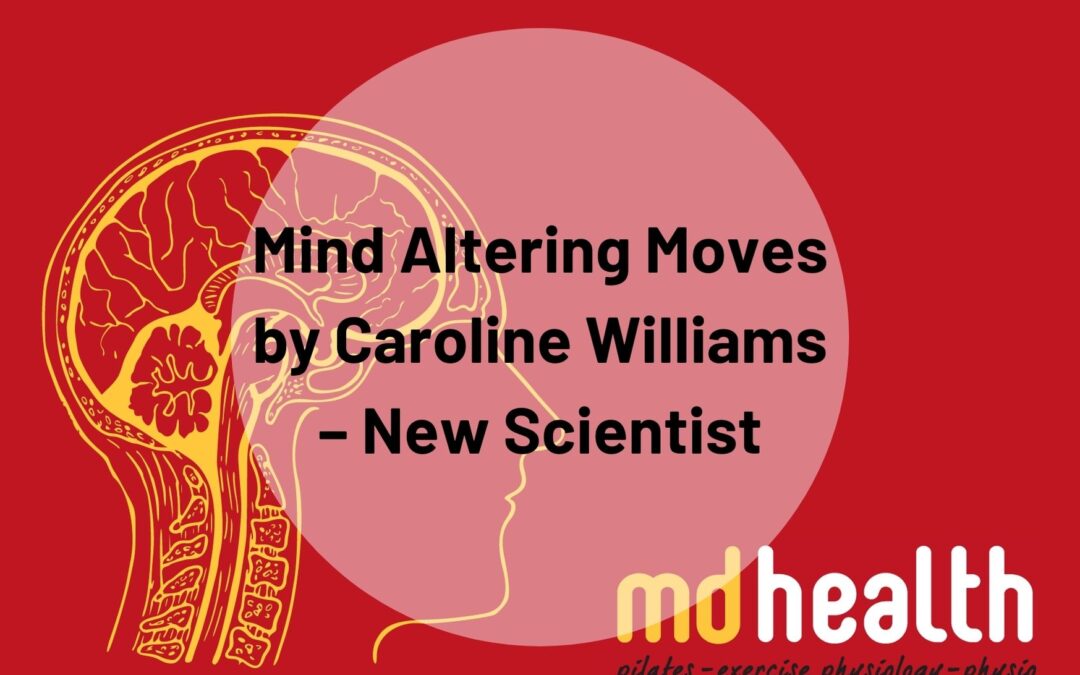Mind Altering Moves by Caroline Williams – New Scientist
More research continues to show that exercise directly and specifically effects your brain. Exercise has helps our brain’s continuous function and development. The following types of exercise have these effects on your brain:
Strength training
This is not the first research report that shows the importance of strength training. Strength training is one of the few things that you can do to improve long term cognitive function and memory. Stronger people in middle age have more grey matter in their brain and memory a decade later. The explanation may be because weight-bearing training releases Osteocalcin from the bones. This improves the size and connectivity of the hippocampus. This has a major role in memory and learning.
In addition, strength training is linked with higher self-esteem. It is also linked to feeling more capable in all stages of life. Our brain has an unconscious sense of health and state of our muscles and bones system. This makes us feel we “can or can’t do something”. As a result, strength training is a powerful tool against anxiety and depression. Sadly though, because of a more sedentary lifestyle, adults today are weaker than adults of the 1980’s. There is further weakness in the up-coming generation.
Walking and Running to clear the mind
If you want to be creative, take a walk or easy paced run. Walking temporarily reduces the blood flow to the pre-frontal cortex. This area of the brain is responsible for rational, straight forward thinking. This allows you to more easily let creative, free thinking thought to occur. The results continue for 15 minutes after you have finished your walk.
Dance
Our brains like regular beats. Our brains are prediction machines that are constantly making guesses in what happens next. Therefore, when we listen to music with regular beats, it helps our prediction machine. So ,every time you get the beat “right”, you get a release of dopamine and feel good. This is further boosted if your body moves to the beat of the music. Finally, moving in synchrony with other people makes us more likely to care about them and share with them.
Controlled Breathing
Regulate your breathing, specifically at a rate of 6 breaths a minute, you are taking control of your brainwaves. You are tying them with the rate in which the air travels in and out of your nose. Sensory neurons at the top of your nose, send messages to the brain. These spread to the areas of the brain which assign meaning to information, involved with planning and decision making. This rate specifically has shown to most effectively fill the air sacs in the lungs. It also stimulates the Vagus nerve, which induces calm and reduces stress.
Breathing at a rate of 3 breaths per minute synchronises with low frequency delta and theta band brainwaves. This effects the parts of the brain associated with emotional processing. It brings a sense of deep relaxation and a state of “being” rather than “thinking”.
Straightening up
It helps to activate the core stabiliser muscles. These are activated during stability exercises, such as Clinical Pilates and Yoga. There is a link to the adrenal medulla (The inner part of the adrenal gland, responsible for our fight and flight response) through the motor cortex of the brain. Therefore, this may be the reason why exercises focusing on core stability also have a stress relieving effect on our brain.
Williams, C (2021) Mind-altering Moves. New Scientist, 22nd May 2021, No. 3335. P34-38.
Do you have any questions?
Call us on (03) 9857 0644 or (07) 3505 1494 (Paddington)
Email us at admin@mdhealth.com.au
Check out our other blog posts here
Our clinical staff would be happy to have chat if you have any questions.



